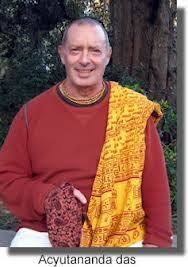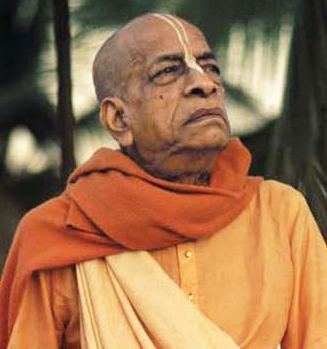Name Achyutananda Das Samkhya Kapila Vaisheshika Kanada Shuddhadvaita Vallabha Acharya | Yoga Patanjali Dvaitadvaita Nimbarka Role Poet | |
 | ||
Jo achyutananda jo jo telugu baby song i telugu lullaby
Achyutananda Das (Achutānanda) or Acyutananda was a 16th-century poet seer and Vaishnava saint from Odisha, India. He was considered to have the power to see the past, present and future. He was a prolific author, and one of the group of five, that led a revolution in spirituality in Odisha by translating Sanskrit texts into the Odia language for common people.
Contents
- Jo achyutananda jo jo telugu baby song i telugu lullaby
- Laali paatalu in telugu jo achyutananda with telugu lyrics
- Early life
- Birth
- Education
- Panchasakh
- Few predictions
- Utkaliya Vaishnavism
- Sunya Purusha
- Jnana mishra bhakti marga
- Pinda Brahmanda Tattva
- Sabda Brahman
- References

He was one of the famous five friends of spirituality and literature Panchasakhā, who transcribed ancient Hindu Sanskrit texts into Odia, for the people of Udra Desha (Odisha). Shri Achyutananda Das was the most prolific writer of the Panchasakhas and wrote numerous books, many of which could be loosely translated as the Book of Prophecies. He is known as the Mahapurusha (a Great Person) for his vast knowledge on many subjects such as spirituality, Yoga, rituals, Buddhist Tantra, Ayurveda (science of life, longevity and medicine), and other various science and social regulations.
Laali paatalu in telugu jo achyutananda with telugu lyrics
Early life
As Acyutānanda became a popular figure, much of his life began to become legend. He is famous for being one of the few who wrote about the social situation of his time and this is a scholarly reason many study his writings. His poetry was often cryptic about himself, and written in code or analogies. Achyutananda belonged to Karana caste by birth, but some claim he was yadava. His surname Das means servant of God.
Birth
Acyutānanda was born in a village by the name "tilakana" ', where two distributaries of the Mahanadi, Luna(Labana Dhara) and Chitrotpala bifurcated, of Cuttack district of Odisha, during the twenty first anka (year of region) of the Gajapati (king) Purushottam Deva. This is thought to be somewhere between 1480 and 1505 by different scholars.
His mother was Padmavati, and his father was Dinabandhu Khuntia, and his grandfather was Gopinath Mohanty, a scribe in the Jagannath Temple,Puri. He was born after his mother prayed at the pillar in front of the Jagannath Temple, and his father had a dream that the divine bird Garuda brought him a child. In legend he is believed to be an incarnation of Garuda.
Education
Acyutānanda had a formal education in Puri. It is agreed by most texts that, like many contemporaries, he met Shri Chaitanya Mahaprabhu in his youth, but did not become a follower of Chaitanya Mahapabhu's Gaudiya Vaishnavism. He became the youngest of the Panchasakhā.
Panchasakhā
Acyutānanda was part of the famous Panchasakhā ('five friends'), who lived between 1450 and 1550 CE. The contemporaneous five saints – Acyutānanda Das, Ananta Das, Jasovanta Das, Jagannātha Das, and Balarāma Das, shaped Vaiṣṇava philosophy, spiritualism and literature of Odisha.
Two important factors set the Panchasakhas apart from other Indian Hindu Saints. They were the first to take the Hindu Sanskrit texts into the reach of the common people, by translating them into the local language (Odia). This was first done by Sāralā Dasa's translation of the Mahābhārata in the mid-fifteenth century, followed by Balarama Dasa's Jagamohana Ramayana, Jaganath Dasa's Bhagavata Purana, and Acyutananda Dasa's Harivamsa. The second aspect is their form of Odia Vaiṣṇavism, which sees God as the "Shunya Purusha" and the nature of the soul as being able to merge into the Absolute.
Some authors, such as N.N Vasu, have depicted Odia Vaishnavism as 'Buddhist-Vaishnavism', since it does not accept Ramanuja's Viśiṣṭādvaita philosophy (11th century), nor does it adhere to orthodox Gaudiya Vaishnavism created in the 16th century. Other scholars, such as Prabhat Mukerjee, have denied these claims supporting the different varieties of Vaishnava philosophy. Scholars debate the influence of the Panchasakha from the original Vaishnava Agama (Pancharatras) while others source their ideas in Sahajayana Buddhism, and the Natha sampradaya. Both the Sahajayana Buddhists and the Panchasakha worshipped the image of Jagannatha as the Buddha, though the Panchasakhas saw Jagannatha as an incarnation of Vishnu as seen in the Dasāvatara image on the main mantel of the Jagannatha Temple.
Few predictions
Achyutananda had predicted the birth of many saints of Bengal, viz. Aurobindo Ghosh, Ramakrishna, Sitaramdas Omkarnath [earlier name Probodh Chandra] etc. In Raj Samhita and Shunya Samhita, Achyutananada foretold even a brief biography of Sitaramdas Omkarnath.
Utkaliya Vaishnavism
Utkaliya Vaishnavism (sometimes called Odia Vaishnavism) developed into its present state, in the 15th century. According to the Panchasakhas, Lord Jagannath is the 'Purna-Brahma', and all the avatars of Vishnu emanate from Him, and also enter into Him at the end. Jagannatha was the chief god of the devotional sect. The chief ideal of the Panchasakhas was that, as a bhakta they would be faithful, humble, learned, selfless, active, benevolent and affectionate. The Panchasakhas were against the caste system, they considered all beings as one. They translated the Sanskrit Classics into local language, Odia. Anyone could become a Vaishnava, even Muslims.
At the time of Shri Chaitanya, his followers who came from Nadia, called later as Gaudiya, were considering themselves greater or superior to the Utkaliya Vaishnavas and were disregarding them. So there was a cold war between them. Knowing this, Shri Chaitanya conferred the title of 'Atibadi' (the great) on Jagannatha Das to keep up the dignity of the Utkaliya Vaishnavas. But it brought no solution, and on the other had created conflict among them. The conflict of these two groups are evident in the Basana Charita Gita of Acyutananda, and even in modern-day derogatory language of the Gaudiya towards the Utkaliya Vaishnavas. (By the 19th century the "Atibadi" sect had grown into an extremist fanatical organisation. that had to be put down by the government and Bhaktivinoda Thakur the then magistrate of Puri was put in charge of this operation..
In actuality the Gaudiya Vaishnavas respected bona fide Odia Vaishnavas for it is recorded in the Chaitanya Charitamrita that several of Lord Chaitanya's most confidential associates where Odia Vaishnavas including Ramananda Raya and his family, Sarvabhauma Bhattacarya the Rajaguru of the King of Odisha, and the King of Orrissa himself. Gaudiya Vaishnava and authentic Odia Vaishnavas both reject the heretical teaching of Acyutananda and the Pancasakha as a mixture of Buddhism, Mayavada,demi-god worship and Tantra with a veneer of Vaishnavism to add respectability. Modern Vaishnavas of many sampradayas reject and oppose the practices of groups like the Pancasakhas..
Sunya Purusha
nāhi tāhāra rūpa varṇa, adṛsha avarṇa tā cinha.
tāhāku brahmā boli kahi, śūnya brahmhati se bolāi.
It has no shape, no colour,
It is invisible and without a name
This Brahman is called Shunya Brahman.
Achyutananda (and the other four saints) believed in a concept of God (Vishnu) as Shunya (emptiness, void, zero) called Shunya Purusha and/or Shunya Brahman. This shunya signifies a transcendental principle that eludes the conceptual nexus applied to human thinking as described in the Upanishads. Achyutanada's culminating work is called the Shunya Samhita where he discusses this philosophy in depth.
śūnyara ākāra viira śūnyara vicāra, śūnye thāi dekha vīra e sacarācara.
dekha e sacarācara śūnyare prakāsha, śūnyu ude hoicanti śūnyare vilāse.
Oh vira look at the shunya
By placing yourself in shunya,
And meditate on mahashunya,
Shunya itself is the form,
Ground of all discriminating knowledge.
Look at the whole world from the pedestal of shunya;
You will find everything manifested in the shunya,
Everything arises out of shunya and
Everything flourishes in the Shunya Brahman.
The philosophy sees Shunya as being full or whole (purna), and this view of Brahman is sometimes called the Purna Shunya (the full/complete void). The Panchasakhas project the deity Jagannatha as the embodiment of the Shunya Purusha. Achyutananda uses a classical (pre-Ramanuja) concept of Vaishnavism that uses both form, and formless aspects of god. This is seen in his statement from the Gurubhakti Gita:
dui je deṇāre pakṣī uḍikari jāi, dui je cakṣure sehi saṃsāre khelai.
eka je na thile kaṇā dui gale anḍha, eṇukari nirguṇa saguṇa sehi bheda.
A bird can only fly with both wings. It can have a perfect vision with both the eyes.
In the absence of one, it becomes one-eyed, and in the absence of both, it is totally blind.
Thus like two eyes Nirguna [god perceived as formless]and Saguna [god perceived with form] are chained together.
Jnana-mishra bhakti-marga
The Panchasakhas are not pure Vaishnavas but have a hodgepodge eclectic belief system. Chaitanya's path of devotion was known as Raganuga Bhakti Marga (brought to Odisha in 1509), which has been wrongly interpreted to say that all you need is love (bhakti) to get God. The Panchasakhas differed from Chaitanyas philosophy, (showing that they are not true followers of Caitanya) and believed in Jnana-mishra Bhakti-marga, which states that one needs a combination of love (bhakti) and knowledge (jnana) to reach God. With our knowledge if we show our pure love (bhakti),we can definitely get the sunyatma (GOD).
Real Bhakti is based on deep jnana as seen in the Vedanta commentaries of Vaishnava acaryas like Ramanuja and Madhvacharya. No authentic Vaishnava sampradaya accepts the Panchasakhas or their followers as Vaishnavas.. However, if you study the root os Vaishnava practices in the agamas and pancaratra you will find much knowledge that gyana and bhakti, as well as karma yoga, are useful tools with which to realize the lord.
Pinda-Brahmanda Tattva
The concept of the Piṇḍa-Brahmāṇḍa is that the body (piṇḍa) is a replica of the Universe (Brahmāṇḍa), or microcosm is a reflection of the macrocosm. Much of the yogic teachings of Acyutānanda are based on this core concept. His teachings are filled with references to outer locations existing as energies in the body.
Sabda Brahman
The concept of the Sabda Brahman is that, God created the universe as sound, and that all things have sound vibration as their essence. The writings of Acyutānanda are filled with mantras and esoteric concepts about sounds and their effects on consciousness. For example, in Acyutānanda's Rama Rasa Boli, the demon Ravanna is said to have meditated on the sound "Sleem" while focusing on the ten other sacred sounds (yoga-dashakshara) to please Gddess Sita. Even more esoteric is this verse from the Shunya Rahasa where one can see the interwoven nature of internal yogic theory and sound found in Acyutānanda's writings:
Oh Jnanins: utter the name of Hari [God]
May be you are the eldest or the youngest.
Piercing six chakras blooms the lotus
Near the ethereal void of air
Between the Sutala and Rasatala
The bee abides at the zenith of the void
One is not a servant of the Lord just because they have a rosary
Unless he utters the name of Krisna in his inner heart;
The Name is the seed, rosary its robe
Rosary is of no use if God's name is mindlessly uttered
The three cords are the three triadic streams
Make your oblations there
Ayudhya, Dwarika, and the city of Gopa
This knowledge is memorised by every soul.
